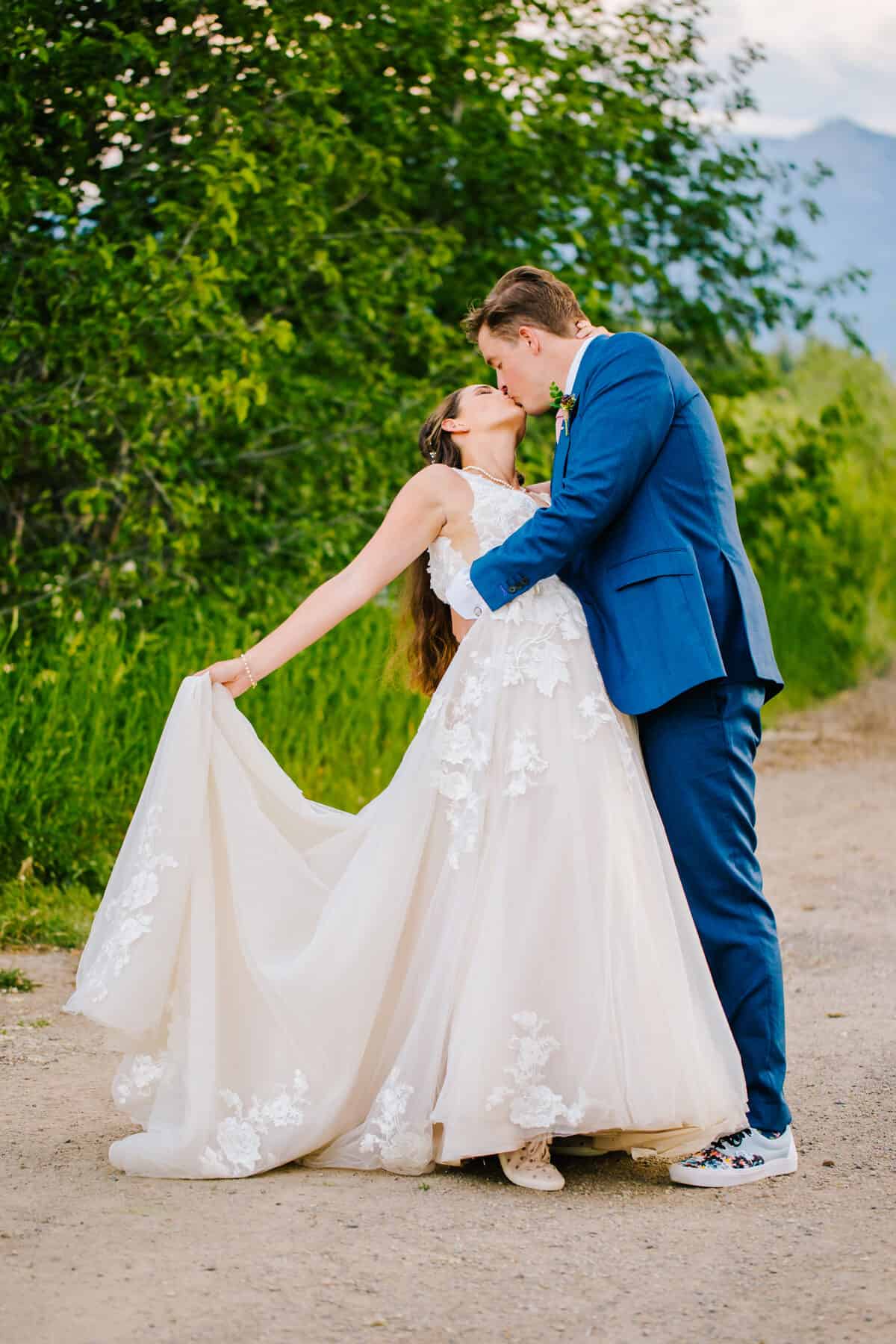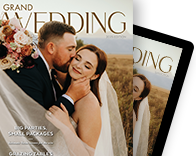It’s Shoe Time
It’s Shoe Time
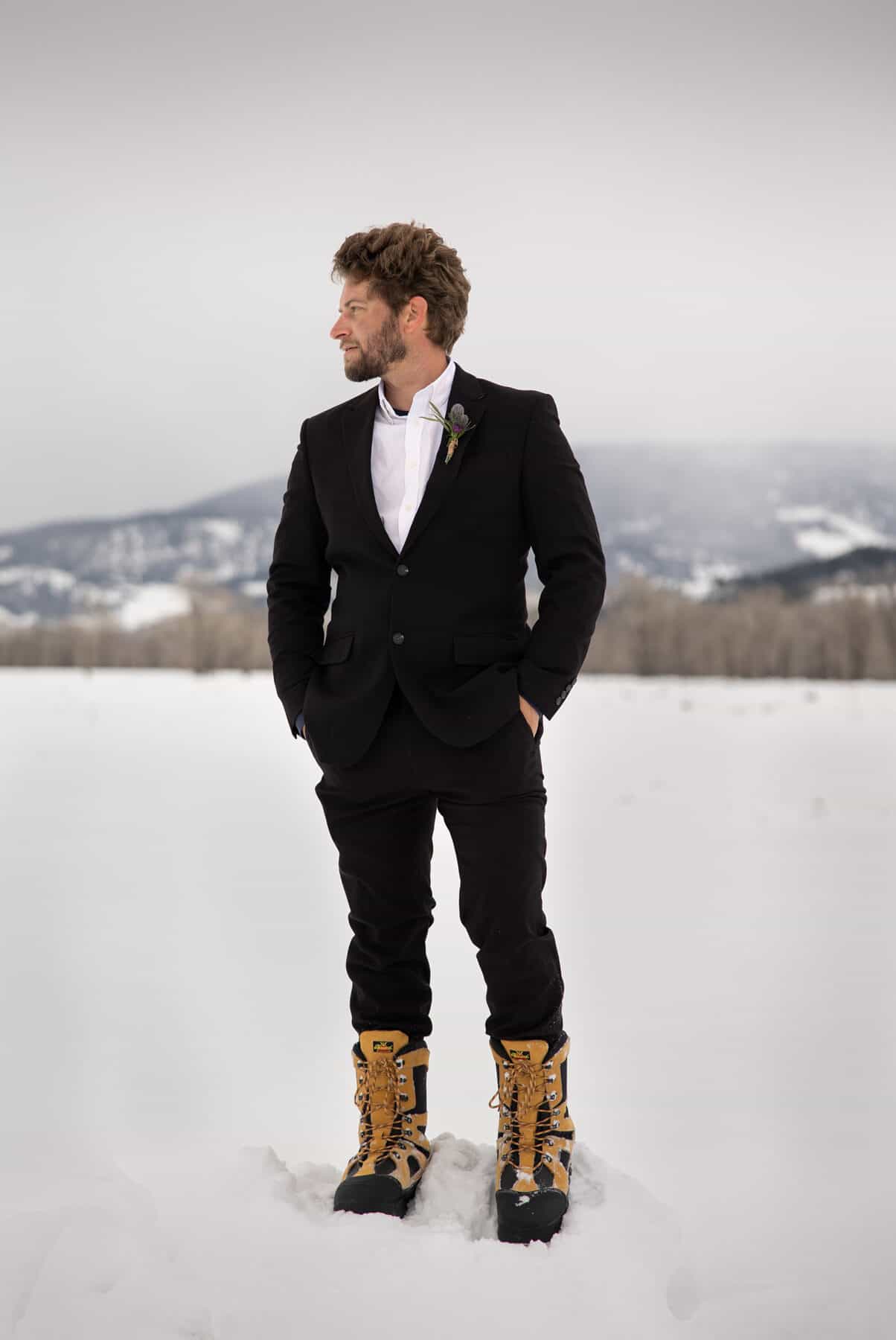
Down the aisle and across the dance floor, only the right shoes will stand up to the task of carrying you throughout your wedding day. And, the perfect pair will help your feet enjoy—not just endure—the celebration.
“It’s a long day,” says Ashley Wold, wedding planner and owner of Wild Rose Weddings and Events. “The average bride will put miles on their feet, so consider what kind of shoes you’re willing to put those miles on.”
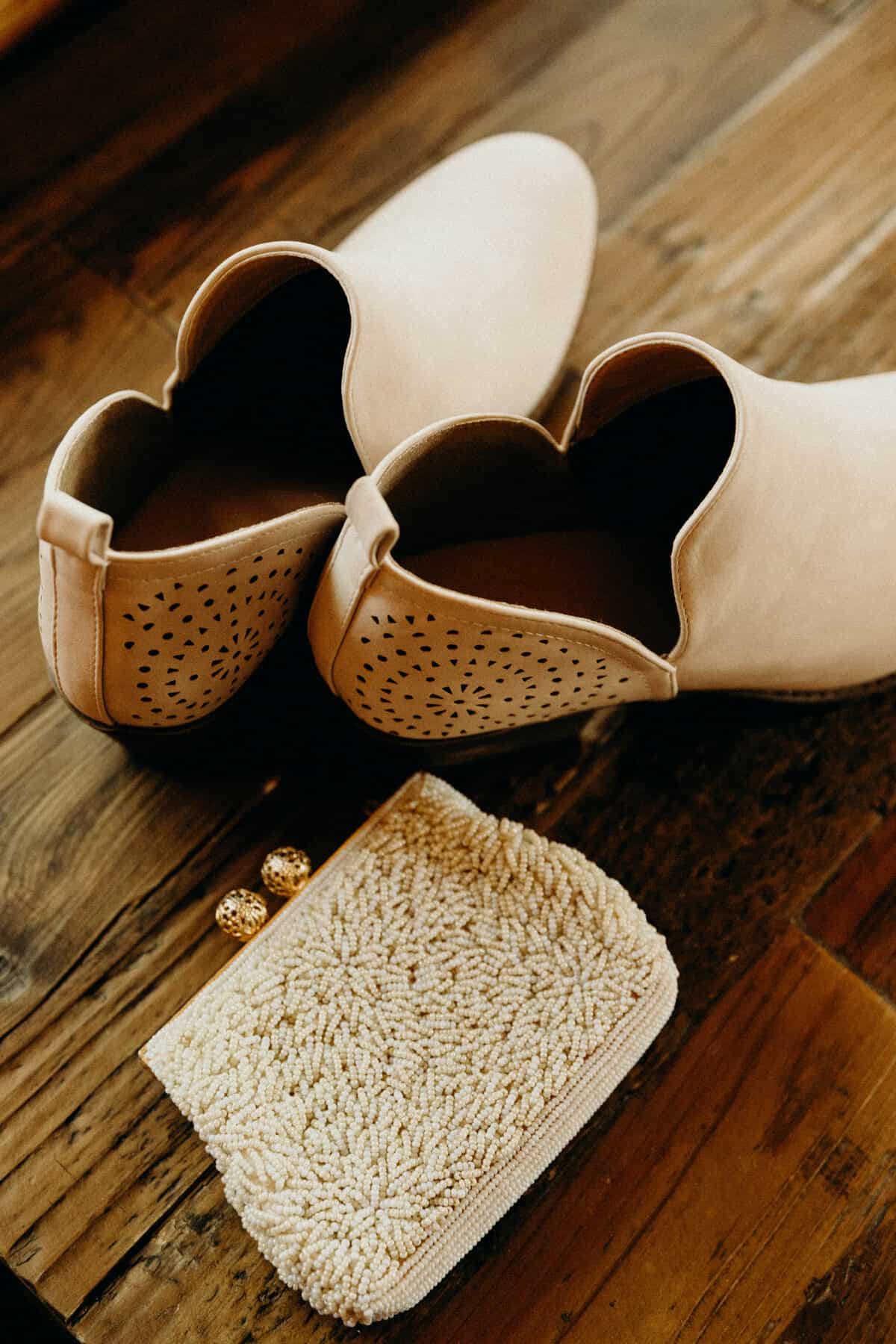
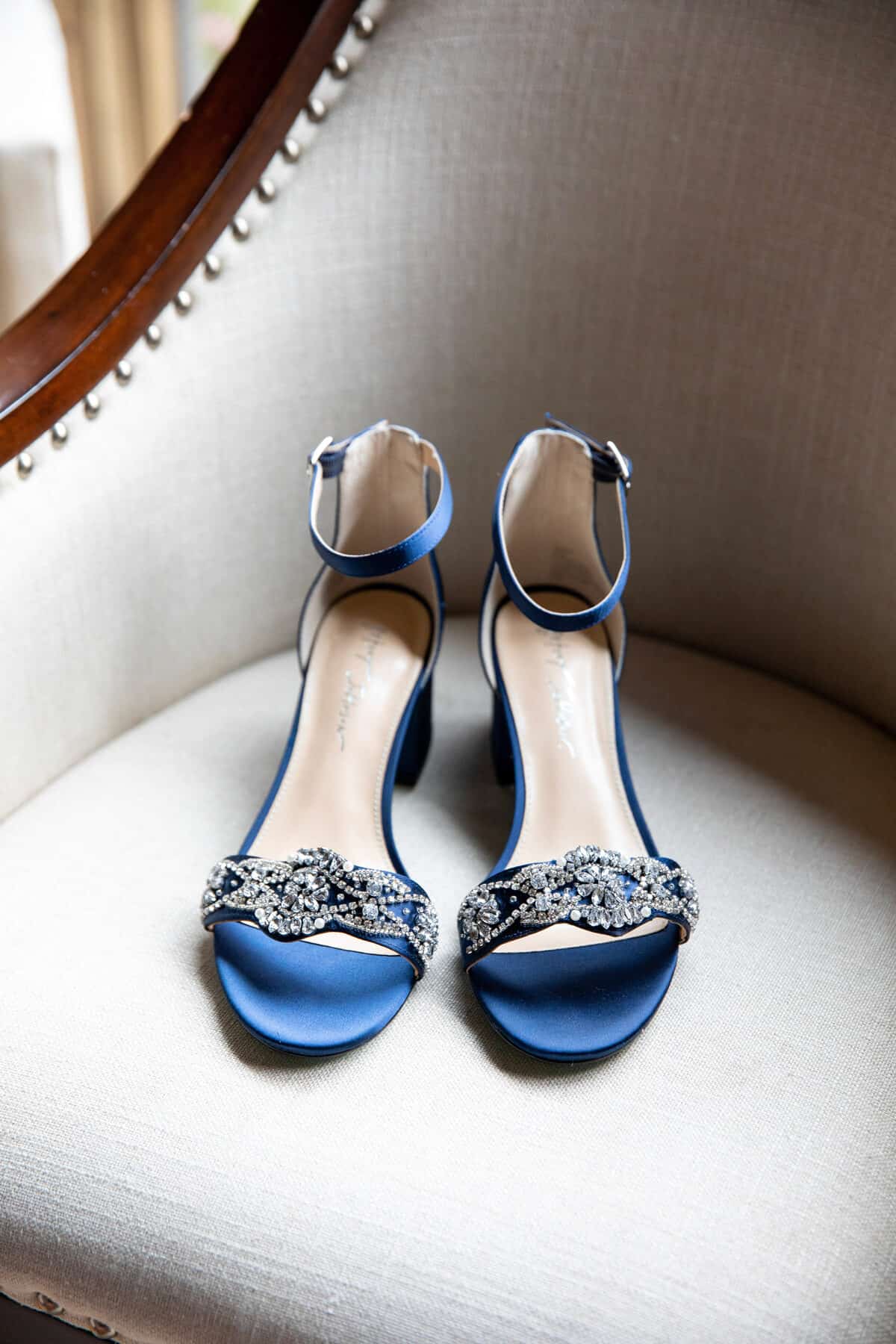
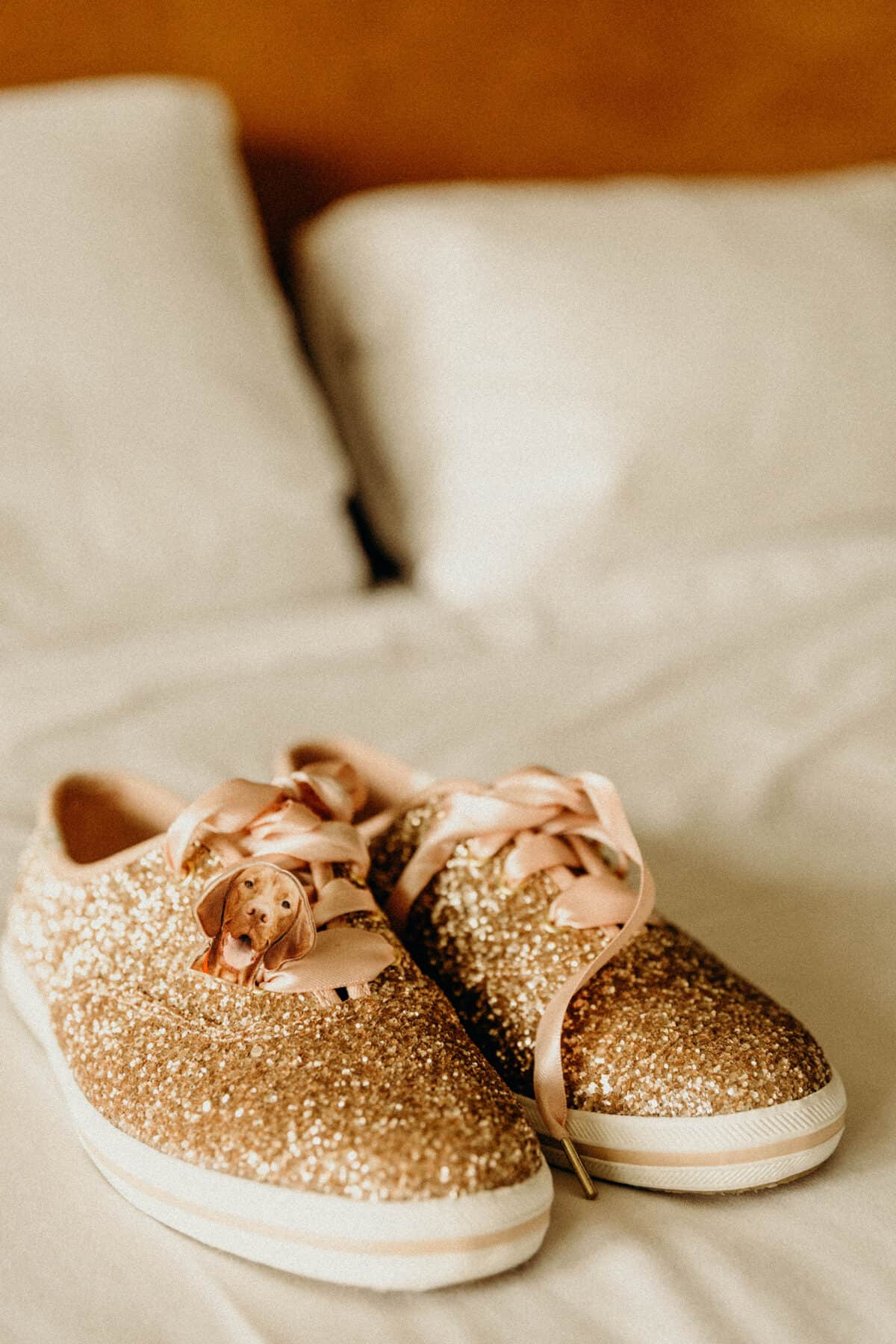
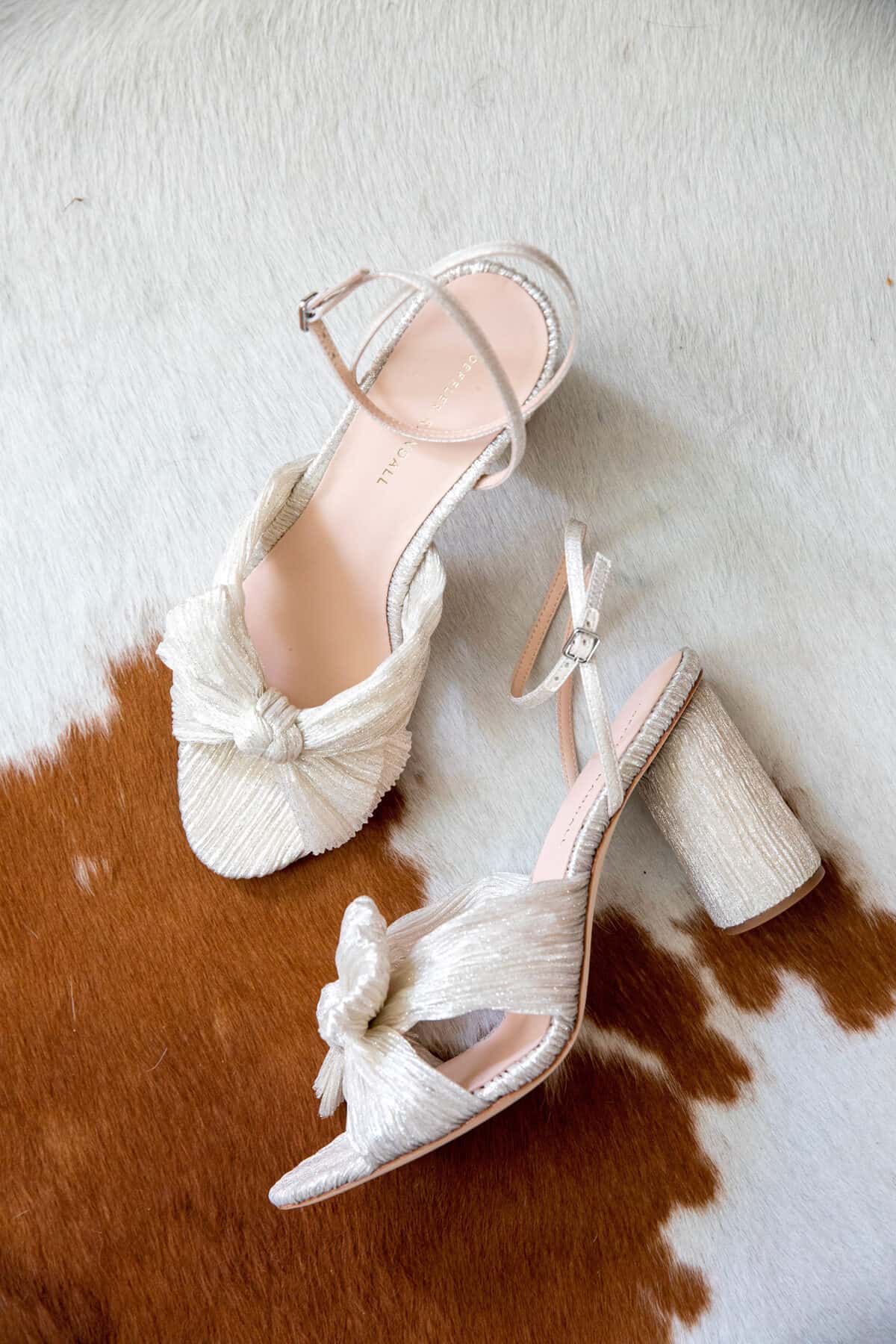
There are no shortage of wedding shoe options, but style and comfort looks different from bride to bride. The first step is to make a budget—your shoe choice needn’t throw your pocketbook into a tailspin. Next, consider your color options. Traditionally, most brides go with a color that complements their dress—shades of nude, champagne, ivory, or white being the most popular. However, some modern brides use their shoes to add a pop of color to their ensemble. In that case, shoes can stand in as your “something blue,” may match the colors of your bridesmaids’ dresses, or can be completely bold and dramatic.

Wold says, locally, she sees sandals, flats, wedge heels, and cowboy boots most frequently. She encourages brides to “let their personality shine through their shoes.” A shorter hem will showcase shoes more than a floor-length gown, and statement shoes can serve as a great photo op, too. While your wedding dress can help dictate the style of shoe to choose, a juxtaposition between the two creates a playful look: try sneakers or booties to showcase your personality. Overall, pointed shoes tend to pinch your feet, while round or open-toed shoes give you more wiggle room. When it’s time to do some dancing, shoes with straps are the most secure.
Even the most basic shoe style can be elevated with embellishment. Consider mirroring your dress’ lace or beaded accents in your shoe’s design. However, be wary of shoe embellishments catching on the hem of a long dress. When trying on shoes, bring along a fabric swatch from your dress so that you can see the colors side-by-side, and test-rub the fabric on the shoe for catching. Also, select your shoes prior to your first dress fitting, as any hemline alterations will be impacted by your shoe’s height.
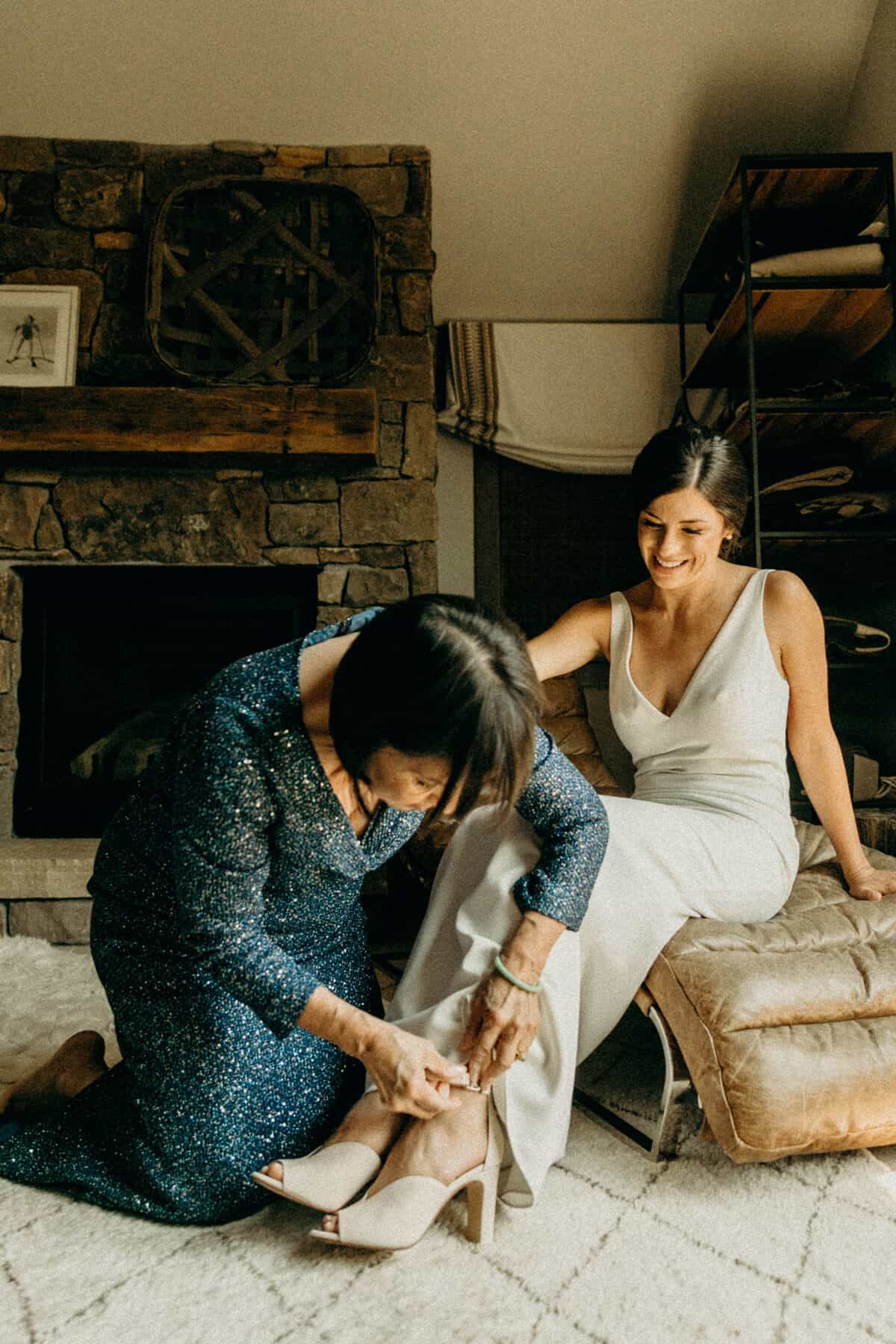
The greatest shoe-related debate is the height of the heel. In the Teton region, this decision is largely determined by the setting of your event. “Stilettos aren’t always appropriate for our local venues,” Wold notes, considering this style can prove wobbly on uneven terrain or get stuck in the soil at an outdoor event. The flatter the shoe, the more versatile it will be, and the more likely you’ll be to wear it again after your wedding. If you’re set on having a heel, make it a low heel that offers sturdy support, or choose a wedge, which is slightly more stable than a stiletto.

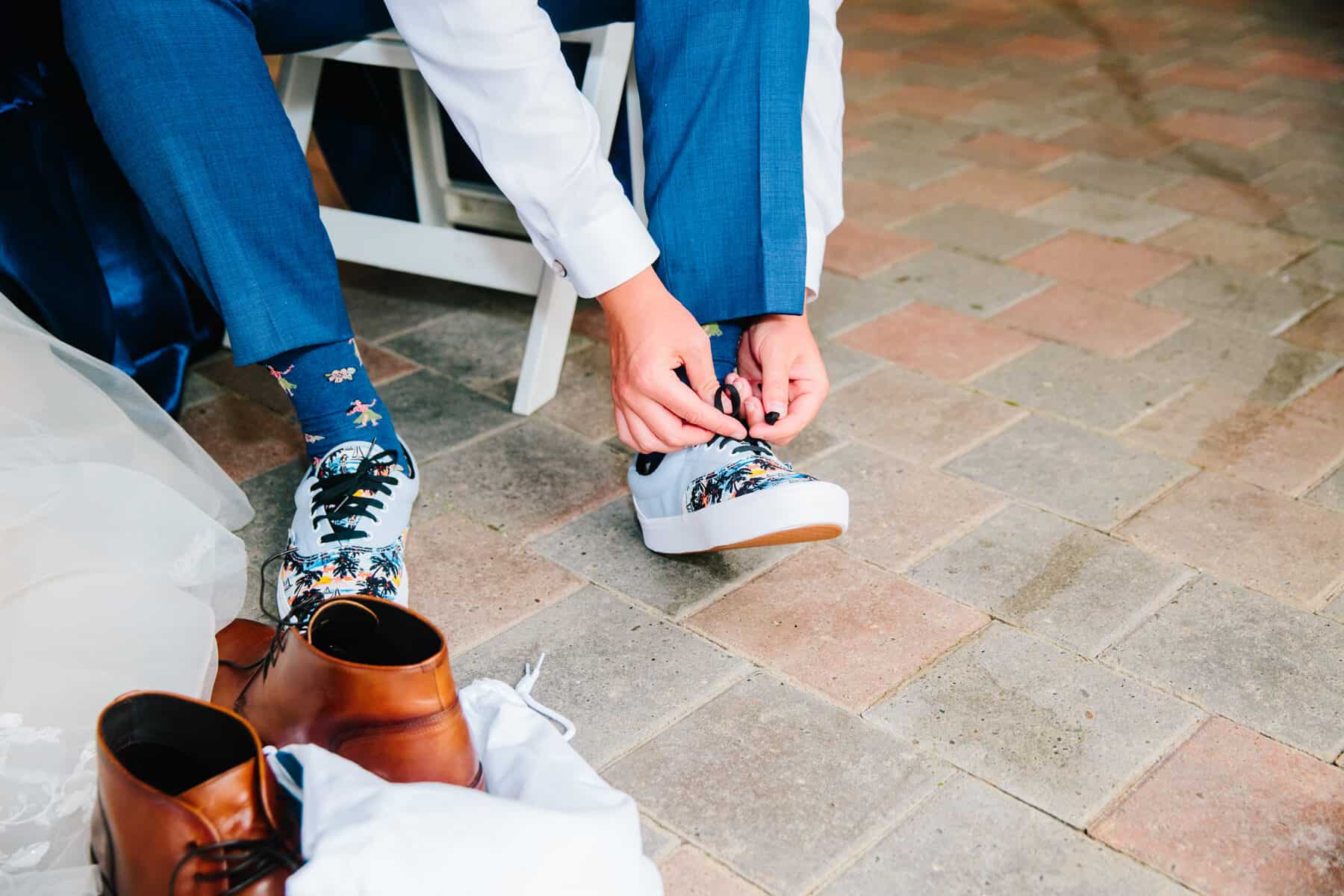
Finally, don’t forget about our mountain weather! You’ve probably already warned your wedding guests about its unpredictability, and this needs to factor into your shoe choice, too. Even if you’re mostly indoors for your winter wedding, you’ll likely step out for a photo or two amidst the mountains. (So, maybe avoid an open-toed shoe in the winter.) Meanwhile, summer temperatures can cause feet to swell, so try on your shoes after an active day on your feet to replicate the conditions on your big day.
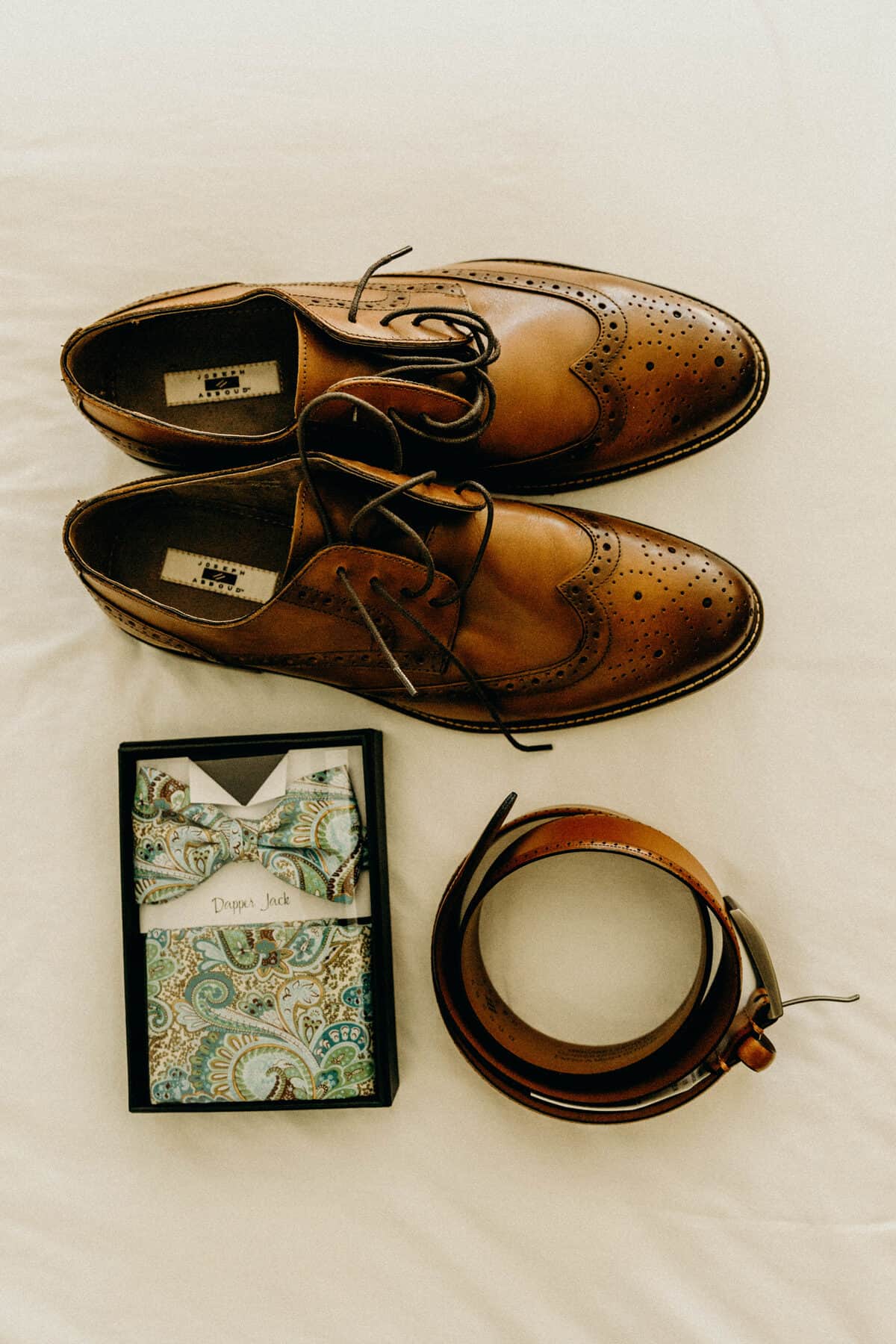
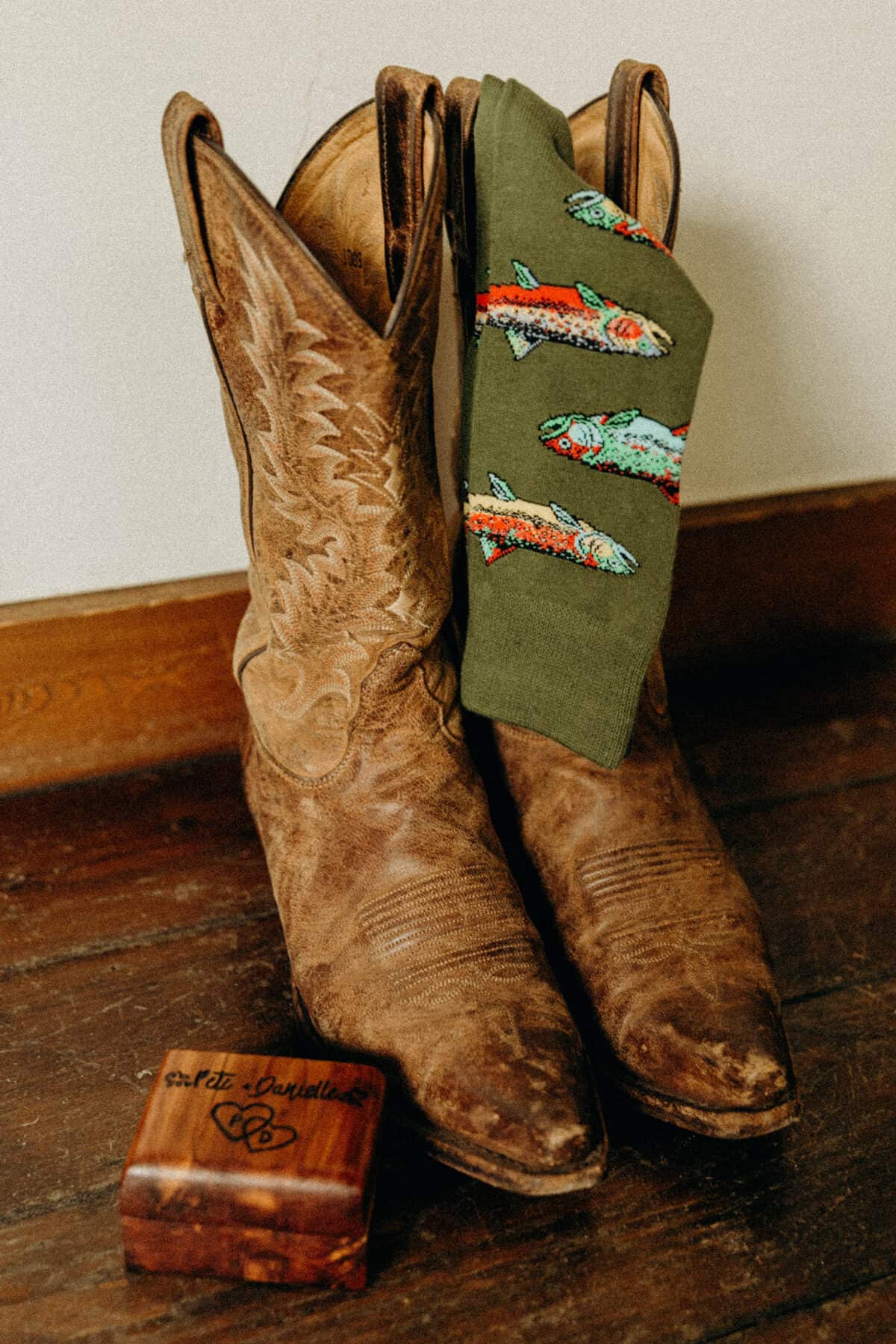
Comfort is Key
- Pay attention to what your shoes are made of, as natural materials will increase both the shoe’s stretch and breathability.
- Break in your shoes before the big day by wearing them around the house for 30-minute increments in the weeks leading up to your wedding. Practice dancing and walking in them until you’re able to comfortably wear them for at least an hour without developing blisters.
- Warm your shoes with minimal heat from a blow dryer before putting them on for break-in sessions. This helps stiff shoe material conform to your feet. Otherwise, a cobbler or leatherworker can do wonders to alter the fit of your shoes.
- Add shoe grips to the bottom of your shoes or sandpaper the soles to increase their traction.
- Lubricate the skin beneath any shoe straps with deodorant to decrease rubbing and sores.
- Increase comfort with inserts—a gel or full insert will provide the most cushion for the length of your foot, while targeted options that emphasize your arch or the ball of your foot can relieve pressure points.
- Store a spare pair of shoes under the bridal table to enable a quick and easy style swap.
